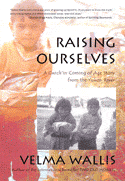This is home. Where everyone is friendly. Everyone says “hi” and smiles as they pass you in the grocery store, or Subway. There are many different cultures present in my community. Koreans. Albanians. Yup’iks. Polish. Irish. Chinese. Japanese. Greeks. You name it, we got it. And all work and play together, nicely.
Our Yup’ik cultural values are:
Love for Children
Respect for others
Sharing
Humility
Hard work
Spirituality
Cooperation
Family Roles
Knowledge of Family tree
Knowledge of language
Hunter Success
Domestic Skills
Avoid Conflict
Humor
Respect for nature
Respect for land
Yup’iks are cultural, spirited, and we value our traditions and knowledge just like any other culture present here. I feel that all cultures follow most if not some of my Yup’ik cultural values. We are value family. And humility. Hard work. All these values play huge roles in our lives and we do our best to serve our families and friends.
All the different individuals who come to Bethel are fascinated by our Yup’ik culture and want to try new foods, and experiences at least once. If not twice. They do not shy away from king salmon. Or assaliaq. Many even adopt some of our favorite things to do like fishing or berry picking. And they bring their traditions, music, food, and more to share.
As the YKHC slogan says: “Working together to acheive excellent health.” Substitue health for communication. Relationships. Friendships. Bethel is all those things are more.





















